
Rafael Wenceslao Núñez Moledo was a Colombian author, lawyer, journalist and politician, who was elected president of Colombia in 1880 and in 1884. Núñez was the leader of the so-called "Regeneration" process which produced the Colombian Constitution of 1886 which was to remain until 1991.

Tomás Cipriano Ignacio Maria de Mosquera y Figueroa Arboleda Salazar, Prieto de Tovar, Vergara, Silva, Hurtado de Mendoza, Urrutia y Guzmán was a Colombian general, political figure. He was president of Colombia four times. The first time was as president of Republic of New Granada from 1845 to 1849. During the Colombian Civil War of 1860–1862 he led liberal forces in a civil war against conservative factions. After the liberals won, a new, federalist constitution was implemented, which established a two-year presidency, and the nation renamed the United States of Colombia. Mosquera served twice as president of the new government. From 1861 to 1862 he served in a non-elected, interim manner, while the constitution was written. From 1862 to 1864 he served in an elected manner. He had a fourth term from 1866 to 1867. Due to the liberal reforms carried out under his leadership, he is considered one of the most important persons in Colombian history of the 19th century.

The Republic of New Granada was a centralist unitary republic consisting primarily of present-day Colombia and Panama with smaller portions of today's Costa Rica, Ecuador, Venezuela, Peru and Brazil that existed from 1831 to 1858. The state was created after the dissolution of Great Colombia in 1830 through the secession of Ecuador and Venezuela. In 1858 the state was renamed into the Granadine Confederation. On 9 May 1834, the national flag was adopted and was used until 26 November 1861, with the Gran Colombian colours in Veles' arrangement. The merchant ensign had the eight-pointed star in white.

José Eliseo Payán Hurtado was a Colombian lawyer, politician, and military officer. Payán as Vice President of Colombia assumed the Presidency of Colombia because of the absence of President Rafael Núñez in 1887.
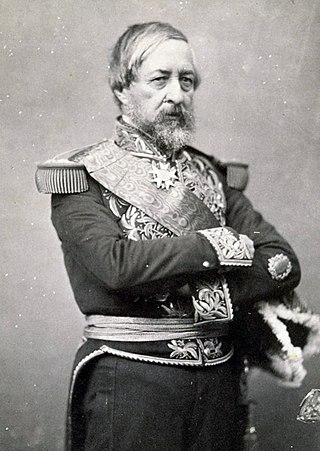
José Hilario López Valdés was a Colombian politician and military officer. He was the President of Colombia between 1849 and 1853.

The War of the Supremes was a civil conflict in Republic of the New Granada from 1839 to 1842 caused by the ambitions of various regional leaders to seize power and depose President José Ignacio de Márquez. It was called the War of the Supremes because of the participation of General José María Obando and other revolutionary gamonales who called themselves jefes supremos.
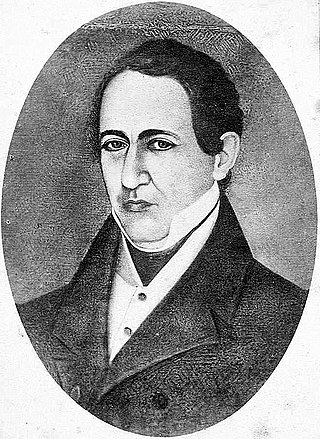
Domingo de Caycedo y Sanz de Santamaría was a Colombian statesman who served as the vice president of Gran Colombia and the Republic of New Granada. He served as acting President of Colombia a total of eleven times, the most terms any president has served to date. He is also credited for creating the Republic of New Granada after the division of Venezuela and Ecuador.

Pedro Alcántara Herrán Martínez de Zaldúa was a Colombian general and statesman who served as President of the Republic of the New Granada between 1841 and 1845. As a general he served in the wars of independence of the New Granada and of Peru.

José Arsenio Vicente del Carmen de Obaldía y Orejuela was the 7th Vice President of New Granada, and as such served as Acting President in two occasions.

Tomás José Ramón del Carmen de Herrera y Pérez Dávila was a Neogranadine statesman and general who in 1840 became Head of State of the Free State of the Isthmus, a short lived independent state which is located in what is now Panama. Tomás de Herrera also became acting President of the Republic of the New Granada for 3 months during the Colombian Civil War of 1854 against General José María Melo, who had committed a coup on 17 April.

José María Dionisio Melo y Ortiz was a Colombian general and political figure who fought in the South American wars of independence, and who rose to power and briefly held the presidency of Colombia in 1854. Of Pijao ancestry, he is considered the country's first and only indigenous president.
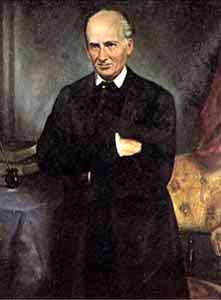
Mariano Ospina Rodríguez was a Colombian politician, journalist and lawyer, founder of the Colombian Conservative Party and later President of Colombia between 1857 and 1861 during the Granadine Confederation.

Manuel María Mallarino Ibargüen was the 8th Vice President of New Granada, and as such served as Acting President from 1855 to 1857.

José Santos Gutiérrez Prieto, was a Colombian statesman and soldier, who became president of the Sovereign State of Boyacá, and later elected as president of the United States of Colombia for the term of 1868-1870.

José María Ramón Obando del Campo was a Neogranadine General and politician who twice served as President of Colombia. As a General, he initially fought for the Royalist Army during the Independence Wars of Colombia, ultimately joining the revolutionary forces of Simón Bolívar towards the end, but once independence was attained he opposed Bolívar's Centralist government.

José María Rojas Garrido was a Colombian Senator, and statesmen, who as the first Presidential Designate became Acting President of the United States of Colombia in 1866 during the absence of President elect Tomás Cipriano de Mosquera. He was a prominent journalist for several Liberal Party newspapers, and is considered one of the most important orators in Colombia's history.

Juan José Nieto Gil was a Colombian politician, Army general and writer. A Liberal party caudillo of Cartagena, he served interimly as Governor of the Province of Cartagena, and was later elected President of the Sovereign State of Bolívar from 1859 to 1864. In 1861, during the Colombian Civil War, he fought on the side of the Liberal rebels against the Administration of President Mariano Ospina Rodríguez, and acting in rebellion proclaimed himself President of the Granadine Confederation in his right as the Presidential Designate, relinquishing power four months later to the Liberal leader, General Tomás Cipriano de Mosquera y Arboleda, who led a successful coup d'état against the Conservative Government in Bogotá.
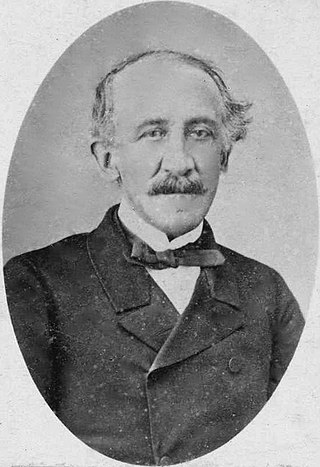
José Gregorio Ignacio Gutiérrez Vergara Azcárate was a Colombian politician and journalist, who served as Designated President of Colombia in 1861, during the War of Sovereignties. He was also Secretary (Minister) of Finance and President (Governor) of the Sovereign State of Cundinamarca.
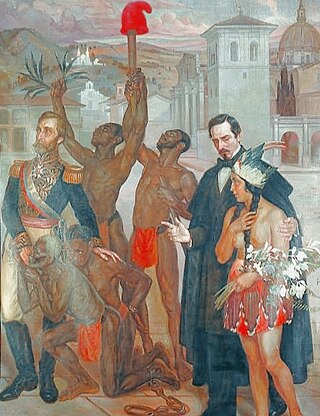
The Colombian Civil War of 1851 was a Civil War in the Republic of New Granada between Liberals and Conservatives, fought between May and September 1851. The cause for the war was the Abolition of Slavery. The war was won by the Liberals.



















